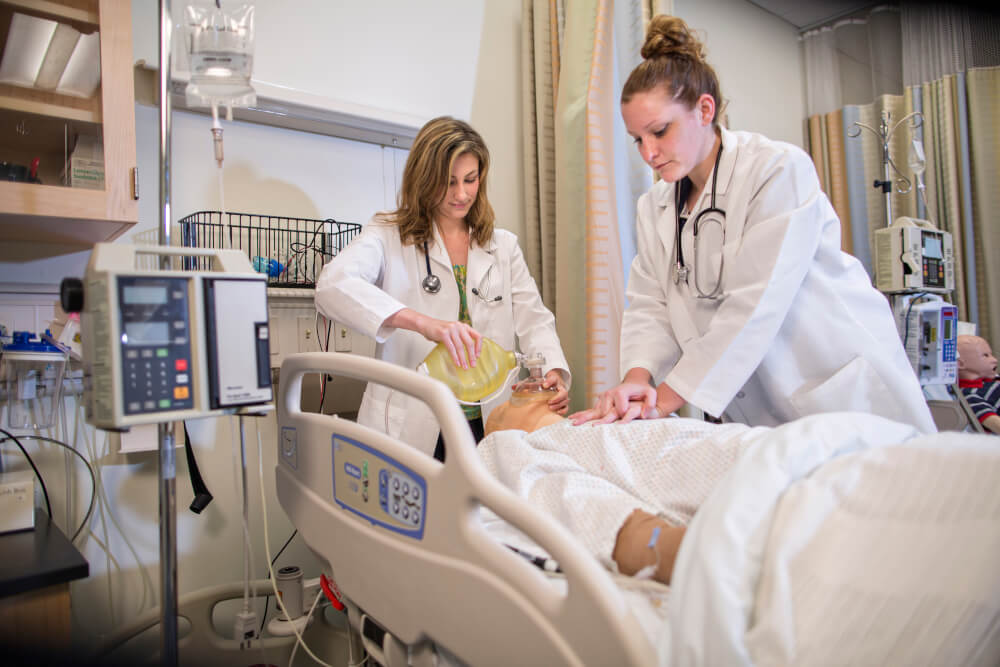The ABCs of Nursing Prioritization

Prioritization is essential for nurses. The ability to look at a situation and determine what is most important, what is time-sensitive, what is critical to the desired outcome and ultimately what to do first and next is prioritization. The purpose of this blog is to explore strategies and guidelines behind prioritizing nursing care to assist current and future nurses in this critical thinking process.
Prioritizing Patient Care
The ability of nurses to prioritize patient care is paramount because it largely determines success or failure in delivering quality health care. The consequences of poor nursing prioritization can be severe, but experienced nurses know the rewards of making wise determinations of how to order their time, actions and attention throughout any given day.
Patient care delivery requires prioritization in several different ways. Nurses decide which actions to take regarding the health care of each patient. Nurses are also often required to decide which patient of a substantial caseload they attend to first.
In some situations and health care settings, nurses have more time to make decisions thoughtfully. In fast-paced environments where complex health conditions may have rapid status changes, prioritizing patient care can be a moment-by-moment series of quick choices. Therefore, it is beneficial for nurses to be well acquainted with general rules and principles for guiding prioritization.
Often called the ABCs of nursing prioritization, these systematic approaches may become second nature to expert nurses and are lifelines for newer nurses who may be less familiar and less comfortable when complex cases inevitably arise.
ABCs of Nursing Prioritization
Perhaps you are looking to enter your second career as a nurse. You may attempt to envision a typical day if you choose to pursue a nursing degree. Imagine you are assigned to care for your very first simulated patient as a student. The patient in the simulation laboratory is gasping for air and has skin that is beginning to turn pale in color with blue undertones. You understand this is an urgent moment, and a nursing faculty member asks what you will do.
The ABCs of nursing prioritization is the starting point for making these decisions. The ABCs are a mnemonic for making it simpler to remember what is most important when you are in these sometimes stressful situations.
- A stands for airway
- B stands for breathing
- C stands for circulation
Life-threatening circumstances may exist when these ABCs of nursing are involved. If the patient’s airway is not open, they cannot breathe. If the patient’s breathing is shallow, labored or hindered, the lack of oxygen intake may instantly become extremely serious. If the patient is profusely bleeding or circulation is otherwise blocked or impaired, the body tissues may not have the blood flow required to sustain vital organ function.
As a nurse, your first job is to remember that these ABCs are the highest priority to address in alphabetical order. Maslow’s hierarchy of needs and the nursing process are additional tools for guiding the decisions of prioritization. Next, we will explore these organized approaches to prioritizing patient care.
Request My Free Marymount Accelerated BSN Program Guide
Maslow’s Hierarchy of Needs
Current nurses have likely learned about Maslow’s hierarchy of needs. Abraham Maslow noted that humans are motivated to meet certain needs before they can achieve a higher level of needs. In other words, some conditions are foundational and must be met before seeking to have additional needs met.
Maslow’s hierarchy of needs is visualized as a pyramid. Needs at the bottom of the pyramid are required as prerequisites to meeting needs higher on the pyramid. The categories of needs in Maslow’s theory are as follows (from the bottom of the pyramid to the top of the pyramid):
- Physiological needs
- Safety needs
- Love and belonging needs
- Esteem needs
- Self-actualization
Using Maslow’s hierarchy of needs as a framework for prioritizing patient care is one step towards improving patient outcomes. When caring for a patient, the priority is to work toward meeting the patient’s physiological needs. These include stabilizing health conditions and ensuring adequate food, water, rest, shelter and clothing.
Maslow’s hierarchy of needs essentially states that when a person’s physiological needs are met, the person may then become motivated to meet their safety needs. These include areas of life that bring security, such as financial stability, health promotion, disease prevention and environmental safety. Job security and secure housing arrangements are in the category of safety needs.
It’s important to remember that the hierarchy of needs may not translate to a perfectly stepwise process in practice. There may be some overlap from one level to another — for example, a person may desire love and belonging but is still working on their basic safety requirements. But generally speaking, Maslow’s hierarchy shows that once a person’s physiologic and safety needs are met, a person begins to have the motivation to seek love and belonging.
Nurses may reference Maslow’s hierarchy of needs when advocating for patients, especially when a foundational unmet need prevents a patient from reaching higher levels. For example, patients experiencing a physiologic condition may worry about their job performance or safety because of their health status. Maslow’s hierarchy indicates that physiological needs must be met before safety, safety before love and belonging, love and belonging before esteem and esteem before self-actualization.
The Nursing Process
ABCs of nursing prioritization and Maslow’s hierarchy of needs can be considered while nurses also apply the steps of the nursing process. The nursing process is interconnected and cyclical, and includes the following stages:
- Assessment: the collection of information about the patient’s condition
- Diagnosis: identification of the problem to be addressed
- Planning: determination along with the patient on how to manage the diagnosis
- Implementation: carrying out the plan of care
- Evaluation: assessment of whether implementation has met the goals of the care plan
Nurses using the nursing process begin with assessing a patient, remembering to assess airway, breathing and circulation first. Subjective and objective information is collected through a patient history and physical examination. Then, a nursing diagnosis is made, followed by planning for how to address the diagnosis. Finally, the plan is implemented and evaluated. The care team must then perform regular reassessments to determine patient outcomes, which may necessitate altering the plan.
Family nurse practitioners also use the nursing process. When a family nurse practitioner prescribes pharmacologic therapy for an infection, and the patient returns to the clinic without symptom resolution after treatment, the treatment can be evaluated as ineffective. At this point, the nurse practitioner will reassess the patient, confirm or alter the diagnosis and potentially prescribe an alternative therapeutic regimen.
If the patient does not take the medication as directed, the implementation phase of the nursing process did not happen as planned. This may require an adjustment to the plan of care. In some states, nurse practitioners have the authority to prescribe medications independently. In other states, nurse practitioners are advocating for full practice authority. In all states, nurse practitioners use the nursing process to organize and prioritize patient care.
How to Prioritize Care
When prioritizing patient care, it often helps to ask yourself some questions to ensure you make the best decisions. Some questions nurses can consider include:
- If I do not attend to this situation immediately, how will this affect the patient?
- Are there smaller tasks I can complete quickly or delegate safely?
- Which actions will have a substantial impact on a patient’s health condition?
- What can I do alone, and what requires the assistance of another nurse or physician?
It is a high priority to consider what actions will harm a patient if not completed immediately. Patient safety is critical — yours is, too. Consider how to use all available resources to manage time wisely. Nursing is a gratifying career when patients experience quality care, and nursing prioritization is one of the most critical skills for patient satisfaction.
Pathway Forward
Are you looking to become a nurse? Consider an accelerated BSN program with Marymount University. In just 16 months, Online ABSN students complete the following requirements in preparation for RN careers:
- An on-campus residency
- Clinical placements in Virginia
- 100% online courses on topics like Research and Evidence-Based Practice
Marymount’s ABSN is accredited by the Commission on Collegiate Nursing Education (CCNE). Nursing courses at Marymount are taught by practicing APRNs who can speak with authority about the profession. The university’s stellar reputation is confirmed by top U.S. News & World Report rankings in its National Universities and Nursing categories.
If you want to become an RN, contact one of our student advisors to discuss if this program is right for you.
